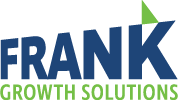In many conversations that I’ve had with board members and executive directors, I often hear differing views, and sometimes ensuing struggles, on what it means for a board to be ‘self-sufficient’. Nonprofit management and staff are typically already stretched thin in managing their operational tasks, so adding more demands from the board can create challenges.
At a high level, this responsibility of the board to itself involves ensuring effective governance, maintaining board health, actively recruiting, having an ongoing succession process and fostering an environment where board members can perform their duties effectively and with integrity.
The following outlines some thoughts 1 on what a board needs to do to manage its own responsibilities and effectively ‘look after itself’:
Establish Clear Governance Practices:
- Boards should clarify, understand and follow their role in governance without micromanaging or placing undue demands on the executive director.
- Create and adhere to governance policies and procedures that align with the nonprofit’s mission and legal requirements.
- Regularly review and update these practices to ensure they remain relevant and effective.
Regular Self-Evaluation:
-
Regular self-evaluation is crucial; boards must regularly assess their own performance, identify areas for improvement, and implement necessary changes. This self-scrutiny helps prevent stagnation and ensures that the board remains responsive to the evolving needs of the nonprofit and itself.
Ensure a Diverse and Skilled Board:
- It is the board’s responsibility to recruit new members who bring valuable skills and experiences, while also ensuring that existing members remain engaged and active.
- Offer ongoing training to keep board members informed and engaged. This may involve providing ongoing training and development opportunities to enhance members’ understanding of their roles and responsibilities, as well as the broader context in which the organization operates.
Onboard New Board Members:
- Provide in depth onboarding for new board members to ensure there is a clear understanding of a board member’s role and responsibilities.
- This process should include the Executive Director and other possible staff members, but should not need them to take the lead.
- Have a current Board Manual as both an onboarding tool and as an ongoing reference.
Ensure Meetings Are Chaired Effectively:
- Stay on topic and stay on time.
- Make sure board information packages are accessible to board members at least seven days in advance of the meeting.
- Have a board member, not always the secretary, take meeting minutes.
- Establish protocols for addressing conflicts of interest and managing disputes to maintain a collaborative environment.
Plan for Succession:
- Develop a succession planning mindset for board members, board leadership and key committee positions. A formal recruitment and succession plan will only be effective if there is ongoing effort.
- Ensure continuity and stability in board operations through planned transitions. Cross-training and transparency are important elements of succession.
Model Ethical Behavior & Open Communication:
- Effective communication and collaboration among board members is essential for a well-functioning board. The board must cultivate an environment where open dialogue is encouraged, and where members feel comfortable expressing their views and concerns.
- By fostering a culture of transparency and mutual respect, the board enhances its ability to make sound decisions and maintain a unified direction.
1Some ideas were prompted by ChatGPT
There you have it. I’m sure there are other areas that could, or should, be included in this list. Feel free to add those to your own planning process in creating a board that is ‘responsible to itself and for itself’.
Talk soon,
Frank



